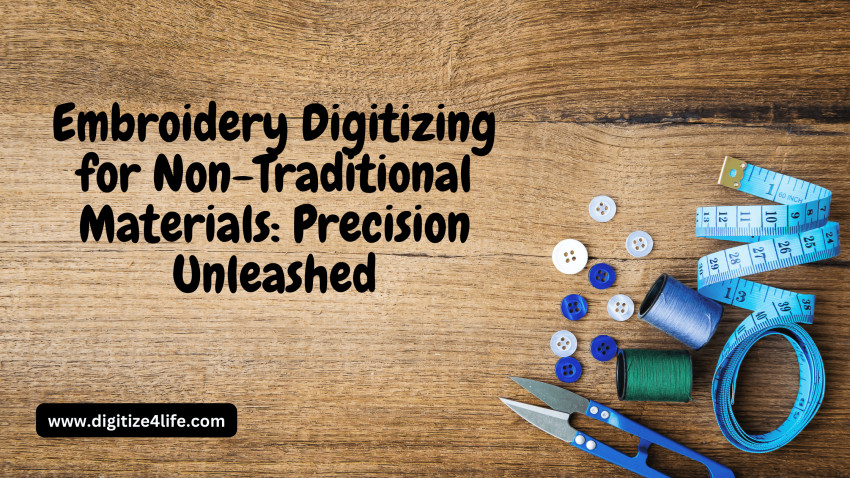
Originally limited to conventional materials like cotton and silk, embroidery has since expanded. The technique of digitizing embroidery has created a plethora of opportunities, enabling aficionados to work with unusual materials with unmatched accuracy and inventiveness. A new era of textile artistry has been ushered in by the union of technology with this age-old technique, which can be applied to leather, wood, or even metal.
Accepting Innovation: Non-Traditional Materials’ Ascent
The development of digitizing embroidery has opened up the art form to a wider audience and democratized it. Though modern artists find these materials intriguing, traditionalists might scoff at the idea of embroidering on metal or leather. Previously thought to be unsuited for needlework, complex designs can now be translated onto surfaces by utilizing sophisticated software and machines.
Unleashing Precision: Methods and Resources
It takes a careful balancing act between inventiveness and accuracy to embroider on non-traditional materials. These materials, in contrast to cloth, present particular difficulties such needles selection, stabilizer selection, and density modification. These obstacles, however, can be surmounted with the appropriate methods and resources, opening up a world of imaginative possibilities.
Density Adjustment: When embroidering on unconventional materials, achieving the ideal stitch density is essential. If the design is too dense, the material may be torn or distorted; if it is too sparse, the design might not have enough definition. Artists can achieve the best possible effects on a range of surfaces by precisely adjusting the stitch parameters.
Selecting a Stabilizer: Throughout the embroidery process, stabilizers are essential for providing stability for the cloth. Selecting the right stabilizer is crucial for non-traditional materials for them to avoid distortion and preserve the design’s integrity. Stabilizers come in a variety of forms, from heat-away to tear-away, and are designed to work with particular materials and applications.
Selection of Needle: An embroidery project’s result can be greatly influenced by the kind and size of needle used. It is important to use needles intended for heavy-duty or specialist purposes when working with non-traditional materials. Using the correct needle can make all the difference in obtaining accurate and clear stitches whether embroidering on metal, wood, or leather.
Exceeding Limitations: Innovative Utilizations
Numerous creative options arise when non-traditional materials are combined with embroidery digitizing. Craftspeople are reinventing textile craftsmanship and pushing the limits of traditional embroidery with items like embroidered metal embellishments and bespoke leather goods. Here are some creative uses to get you thinking about your next project:
Leather Decorations: With finely embroidered decorations, simple leather accessories can be transformed into one-of-a-kind works of art. Whether a handbag, wallet, or jacket, the process of embroidery digitization lends a sense of exclusivity and refinement to leather products.
Wood Inlays: By fusing intricate embroidery with the natural warmth of wood, embroidered wood inlays elevate woodworking projects. This combination of materials gives any woodworking project depth and texture, whether it’s used for custom furniture accents or decorative panels.
Metallic Accents: Use metallic thread embroidery to give metallic objects a glamorous touch. Metallic accents turn commonplace items into remarkable works of art by generating eye-catching features and dramatic contrasts in anything from jewelry to home décor.
Redefining Textile Artistry in Conclusion
A paradigm change in textile artistry is represented by embroidery digitization for non-traditional materials, where creativity and precision are combined in previously unheard-of ways. Through a willingness to explore new ideas and stretch the limits of conventional needlework, artists can let their imaginations run wild and turn common materials into remarkable artwork. With precision unleashed, the possibilities are unlimited, regardless of the material — leather, wood, or metal.
Set out on a voyage of artistic discovery right now to discover the revolutionary potential of embroidery digitization for non-traditional materials.




